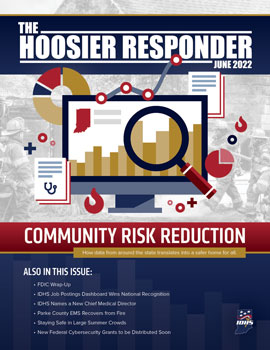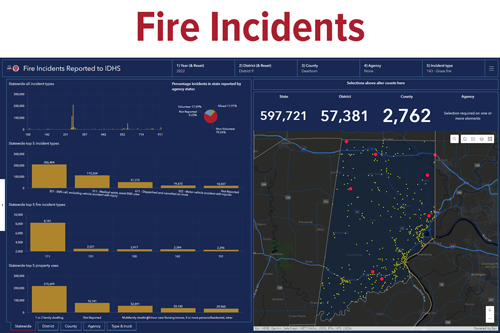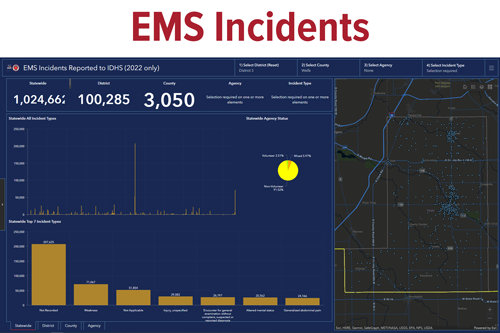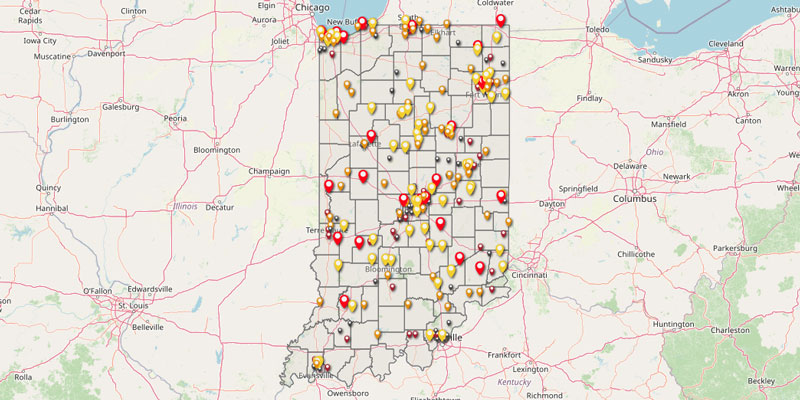Community Risk Reduction

Vast amounts of data are available via the first responder community, and the data are used to inform the true risks to all Hoosiers and create the right strategies to reduce those risks. That is the concept behind Community Risk Reduction (CRR). Data informs the CRR, which then allows for the identification of high-risk areas and behaviors that can then be targeted. Armed with this knowledge, partnerships can form effective strategies using limited resources more efficiently. Benefits of a CRR strategy: identifies new and emerging hazards, addresses underserved communities and changing community demographics, improves Insurance Services Office (ISO) ratings, offsets declining budgets of fire and local governments, helps with accreditation.
Vision 20/20, a national organization with expertise in CRR efforts in the fire service, is working closely with the Indiana Community Risk Reduction Coalition to improve data collection from fire and EMS agencies across the state. Indiana is currently conducting a statewide risk assessment (SRA). Once the SRA is complete, the coalition will begin the “Identify Risks” stage of the CRR process. The risks will be prioritized and plans will be drafted to address those risks for each community. The data analysis will culminate in several mitigation strategies and tactics to address risk factors in communities across the state. Contact Rob Miller at rmiller2@dhs.in.gov to learn more about the CRR effort or get involved.
Data Reporting Affects Grants
Reporting data affects grant funding for fire departments. State legislators in 2022 passed HEA 1314, which requires fire departments to report their emergency response data annually (Section 41). If a fire department fails to do so, it may be ineligible to receive certain grants administered by IDHS. Read HEA 1314 details
Fire Incident Data
EMS Incident Data
Residential Fire Fatalities
Open Fire Fatalities DashboardResidential Fire Fatalities
Highlighted Data
Data is from the U.S. Fire Administration (2025).
Chart might not total 100 percent due to rounding.
Data is from the U.S. Fire Administration (2022).
Chart might not total 100 percent due to rounding.
Additional Data
- Incident Data
Incident Dashboards
The Indiana Community Risk Reduction Coalition maintains two interactive dashboards designed for public safety agencies and the public to access fire and EMS incident data statewide. These incidents are shown on a map, and statistical figures are available at the state, district, county and local agency levels.
Data for the dashboards is from Indiana fire departments and EMS agencies as reported to the State Fire Marshal through ImageTrend. Learn more about ImageTrend Reporting
Access the dashboards below.
Note: The dashboards were designed for best viewing on screens 10 inches and larger.
Annual Statewide Incident Types
Fire Incidents (2022)
Rank Incident Type #1 EMS Call #2 Medical Assist, Assist EMS Crew #3 Dispatched and Cancelled En Route #4 Motor Vehicle Accident With Injuries #5 Unspecified Incident Type EMS Incidents (2022)
Rank Incident Type #1 Unspecified Incident Type #2 Weakness #3 Not Applicable #4 Unspecified Injury #5 General Examination Encounter - Fire Investigations
IDHS Fire Investigations
Fire Investigation Type Cases by Year 2024 2023 2022 2021 Residential 499 464 401 342 Commercial 74 71 76 59 Vehicle 56 30 32 19 Other 129 124 88 92 Consultation 6 11 7 12 Notification 46 50 47 42 Assist and Cell Warrants 83 76 41 71 Indiana Residential Fire Fatalities Map
Find where deaths have occurred in residential fires.
- Resources





